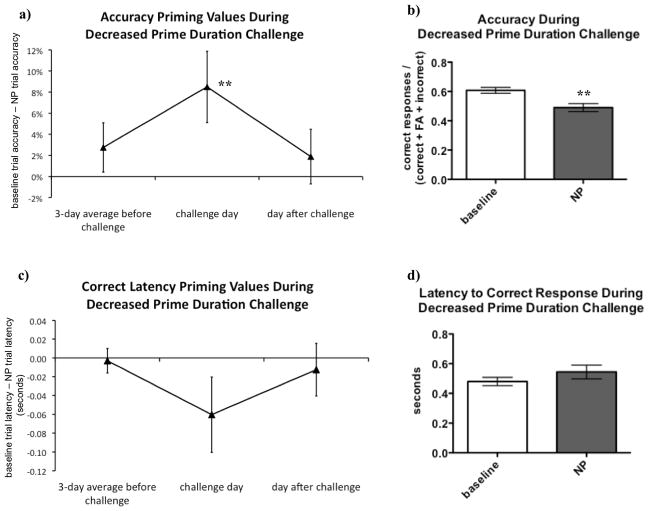Figure 4.
Decreasing the duration of the prime stimulus enhanced negative priming (NP). On the day of the decreased prime duration challenge, accuracy priming values became more positive, reflecting more NP (A). Comparison of accuracy priming values before, during, and after the challenge showed a significant main effect of day [F(2, 24) = 5.35, p < 0.05]. Post hoc testing confirmed that accuracy priming values on the challenge day were significantly larger compared to both the three days preceding the challenge (p < 0.05) and the day after the challenge (p < 0.05). Rats exhibited significantly higher accuracy in baseline trials compared with NP trials [t(12) = 4.29, p < 0.01] on the day of the challenge (B). Similarly, correct latency priming values became more negative on the day of the challenge, also reflecting more NP (C), although this effect did not reach statistical significance [F<1, ns] and there was no significant difference between correct response latencies in baseline and NP trials [t(12) = 0.91, p > 0.1] on the day of the challenge (D).
Data were analyzed using repeated-measures analyses of variance (ANOVA) to compare the priming values during challenge to the sessions before and after the challenge. When statistically significant effects were found in the ANOVAs, post hoc comparisons among means were conducted using Newman-Keuls tests. Paired two-tailed t-tests were used to compare performance during baseline and NP trials on the duration challenge days. Values are expressed as mean ± SEM. Asterisks (**p < 0.01) denote significant differences compared with days before and after the challenge (A) or compared with baseline trials (B).

